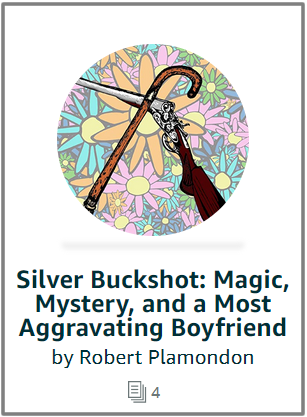 In Lucky Episode 13 of Silver Buckshot, Bedtime Story, Flavia and Frank need to get some rest before their mysterious midnight rendezvous. Frank offers to tell her a bedtime story. Perhaps unwisely, she agrees. He tells her a fairy tale about little Princess Flavia.
In Lucky Episode 13 of Silver Buckshot, Bedtime Story, Flavia and Frank need to get some rest before their mysterious midnight rendezvous. Frank offers to tell her a bedtime story. Perhaps unwisely, she agrees. He tells her a fairy tale about little Princess Flavia.
Sample line: “When Flavia was four years old, she taught herself to rob banks and stampede cattle. The people beseeched the king and queen to control her, but they were helpless in the face of her transcendental naughtiness.”
Don’t miss Frank’s amazing plot twist in Episode 13 of Silver Buckshot, Bedtime Story!
See my main story post for Silver Buckshot or jump right into Episode 1 on Kindle Vella.



